As the name suggests, The Quattro 150P is an f/4 telescope with a 150mm primary mirror. It includes a corrector that takes the telescope down to a speedy f/3.45.
Quattro telescopes are designed to be used as astrographs, that is, paired with a camera; so the 150P doesn’t come with eyepieces.
However, optics that make a good astrograph also produce good visuals, and with Jupiter nearing opposition we tried the Quattro with a couple of our own eyepieces, using the supplied 2-inch extension tube.
Our 4.5mm lens gave a pleasing 133x magnification and the views of Jupiter were really quite remarkable: sharp, detailed and colourful.
Encouraged by the results, we switched to a 13mm, 100° eyepiece for a widefield view at 46x, which gave us a mouth-watering look at the Double Cluster in Perseus.
- This telescope is among our pick of the best telescopes for astrophotography and the best telescopes for observing the planets
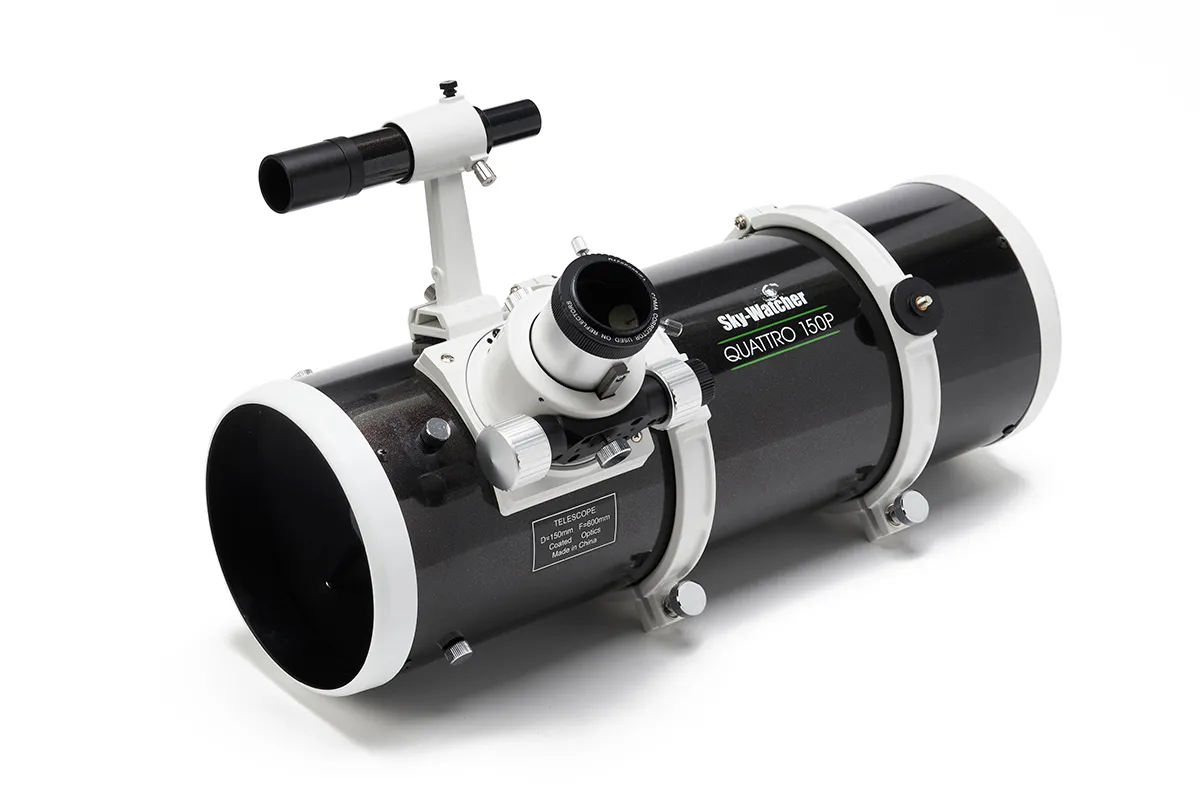
Without the coma corrector, stars near the edge of the field of view were affected by the inherent coma that you expect with an f/4 instrument, but the Quattro demonstrated that despite its astrograph pedigree, it can offer worthy visual observations if desired.
With our CCD camera attached to the corrector, the Quattro 150P really came into its own.
Focusing was easy and accurate, and the star shapes in the corners of our 16mm sensor images were perfectly acceptable.
The Quattro has thin spider vanes, producing sharp diffraction spikes, so the Pleiades cluster, M45, proved to be an ideal target and we were able to capture plenty of nebulosity with three-minute exposures.
The wide view on offer is great for large targets like the Andromeda Galaxy, M31, or the nearby Triangulum Galaxy, M33, and in both cases we were impressed by the fast capture of plenty of good-quality data.
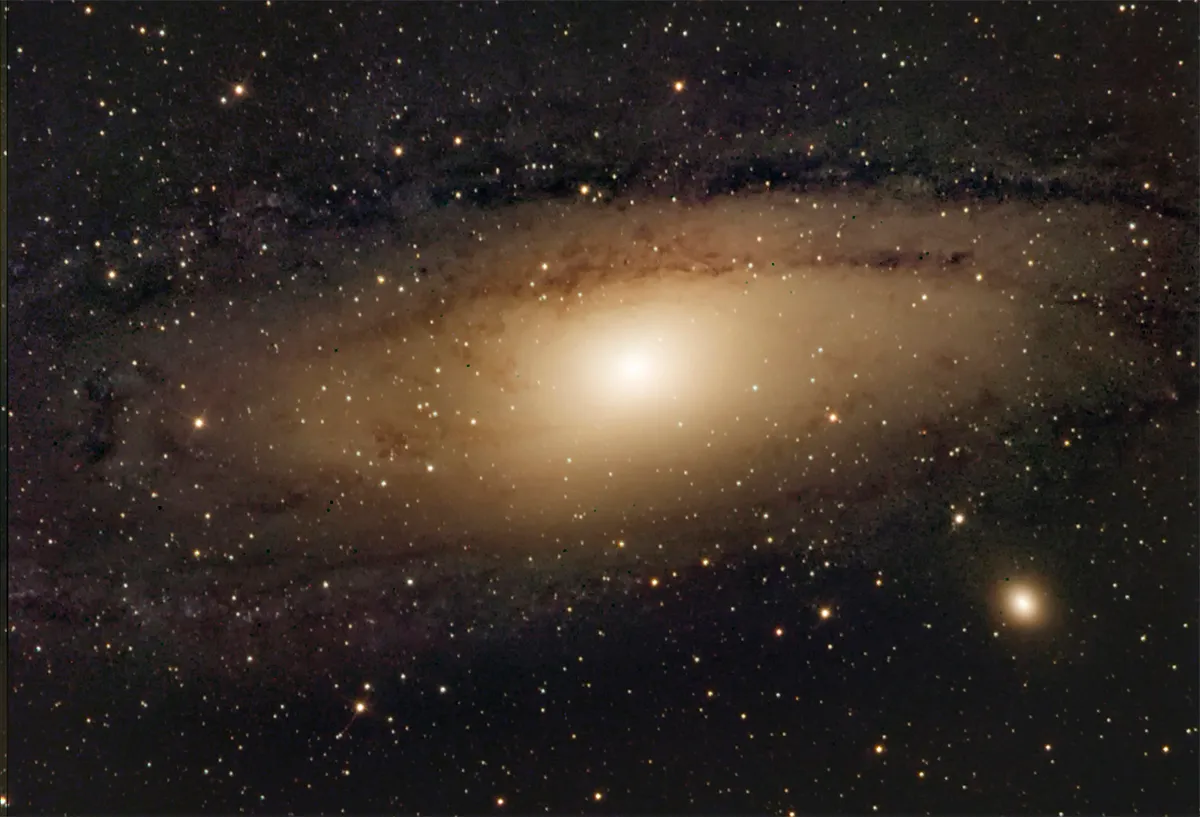
We even managed to capture a cheeky shot of the October 2022 partial solar eclipse using a white-light filter.
This astro imaging specialist, then, delivers enjoyable visual use on planets, deep-sky objects, and even a lucky solar image when the chance came, proving to be quite the all-rounder.
It was at this point that we realised how much we love the Quattro 150P.
It reminds us of our previous good experiences with our own larger version: compact and easy to use, fast, and capable of great results in the shortest time.
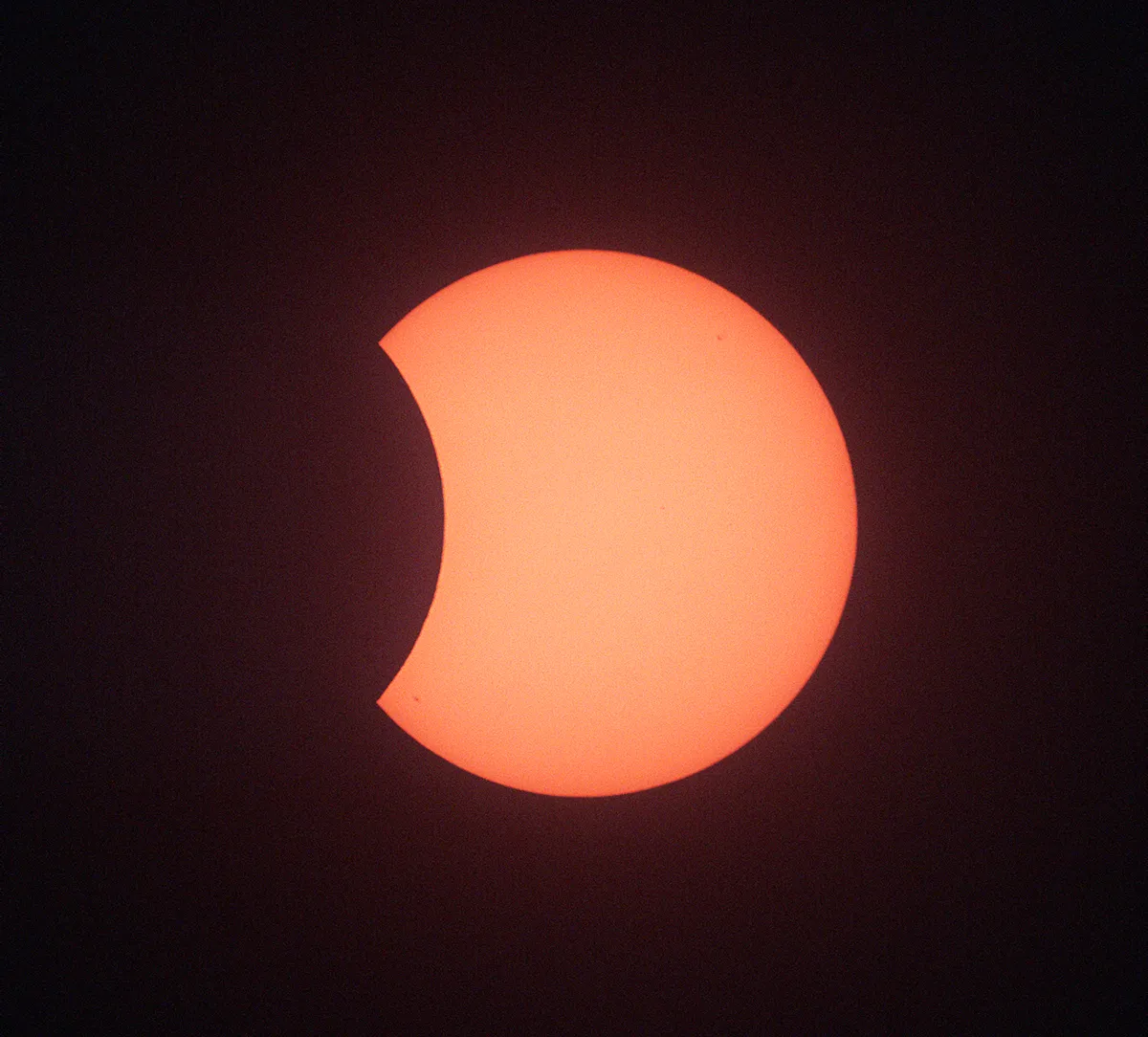
It was also at this point, however, that we remembered the foibles of f/4 telescopes, particularly when it comes to collimating.
The optics are a lot less forgiving of slight errors, and unfortunately our review model arrived with several issues in the way it had been set up.
For instance, the centre ring on the primary mirror was incorrectly placed and the secondary mirror was attached to its mount at a wonky angle, while the alignment of the spider vanes pulled the secondary mirror off to one side, producing diverging diffraction spikes.
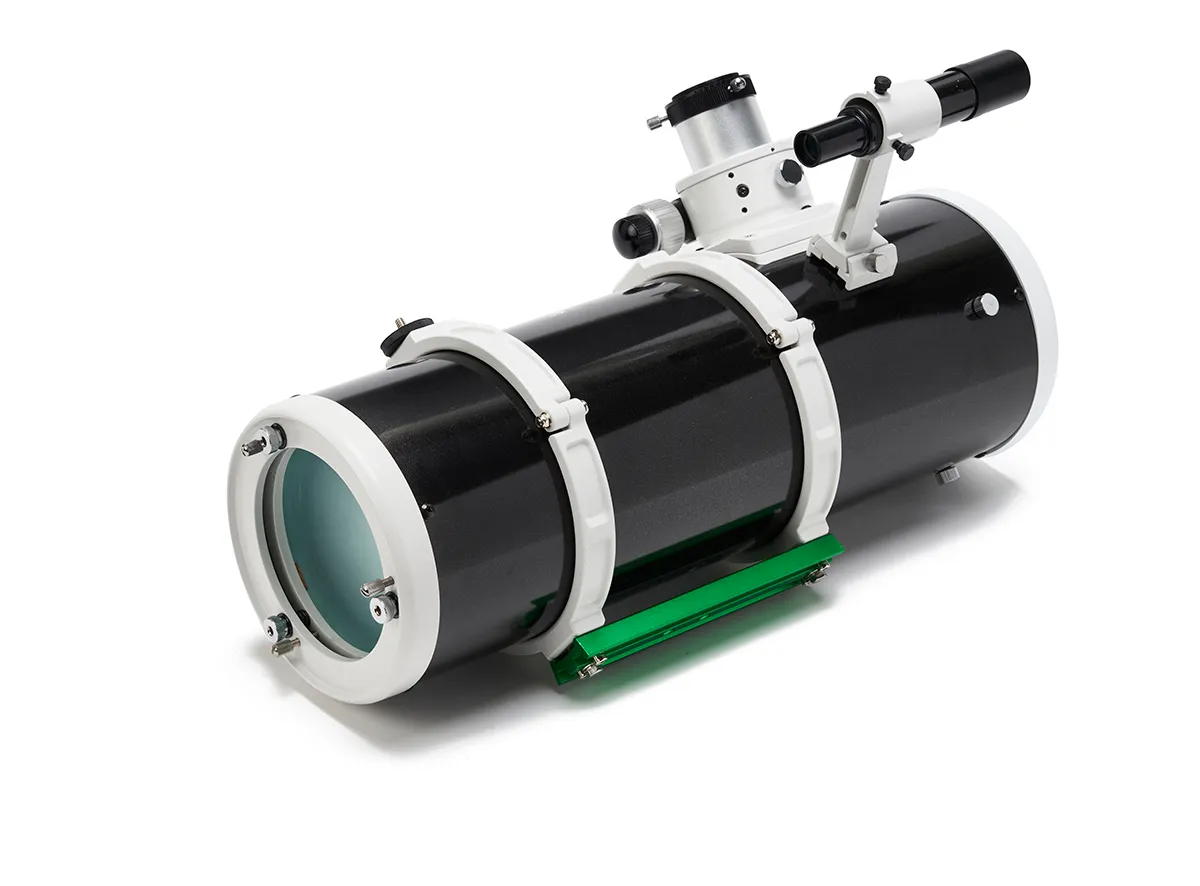
These issues, although easily remedied by experienced users, would make the Quattro 150P we used a frustrating telescope if you were new to fast Newtonian reflectors or precise collimation techniques.
This has impacted the build and design score we were able to give it.
Fortunately, we had advanced collimation equipment available and were able to reasonably align the mirrors despite the errors in the factory setup, but if this was our own telescope we would strip it down and accurately rebuild it, blackening the shiny bevelled edges of the mirrors, as it has all the makings of an excellent performer once correctly set up.
For such a capable 6-inch, fast astrograph with field flattener, the asking price seems a bargain, and well worth an afternoon tweaking and tuning the instrument until it performs at its true potential.
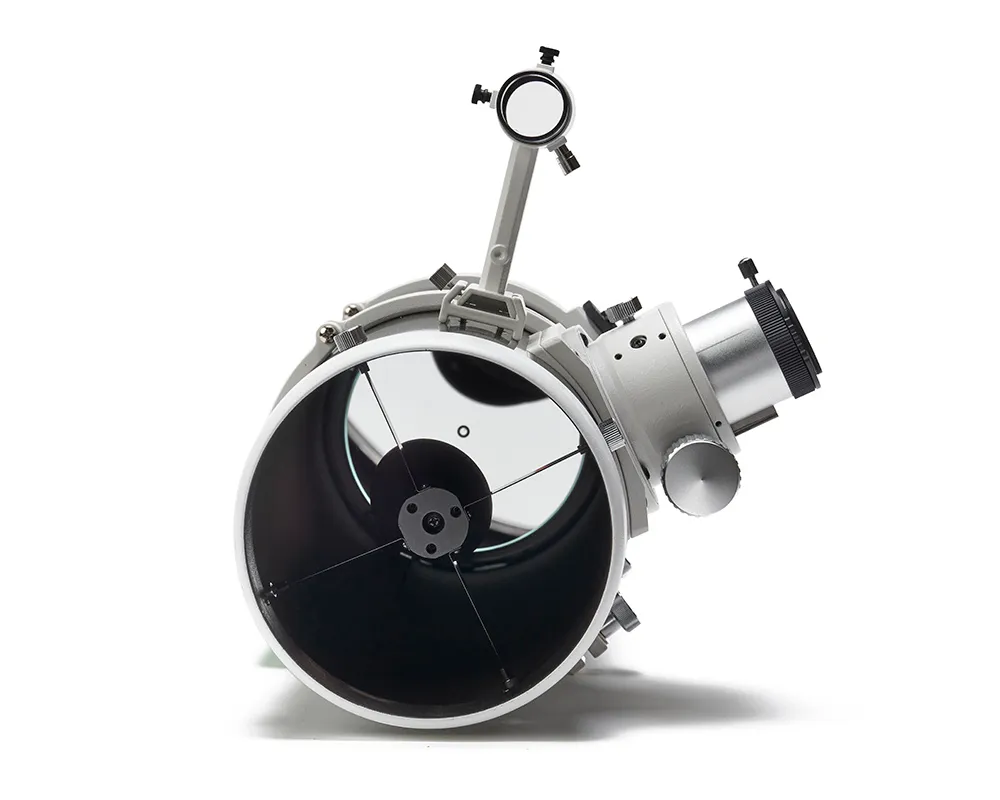
f/4 parabolic mirror
Sky-Watcher has a deserved reputation for producing affordable, good-quality telescope mirrors, and the parabolic 150mm f/4 primary mirror in the Quattro 150P maintains that standard.
It has multiple silicon dioxide coatings to provide protection from the elements.
In conjunction with the coma corrector, the optics suck in photons at a rapid f/3.45, which makes the Quattro especially attractive to astrophotographers limited by the weather.
Fast focal ratios make for shorter exposures, perhaps through a DSLR, which connects directly to the field flattener with a T-ring.
Even better, a CMOS camera would really maximise the available clear-sky time, allowing for a greater number of exposures. For more on this, read our guide to astrophotography with a CMOS camera.
To make the most of the f/4 optics we found it preferable to check the mirror collimation before each session, while the steel tube construction and open back design allowed the mirror to be cooled and ready to go after an hour or so.
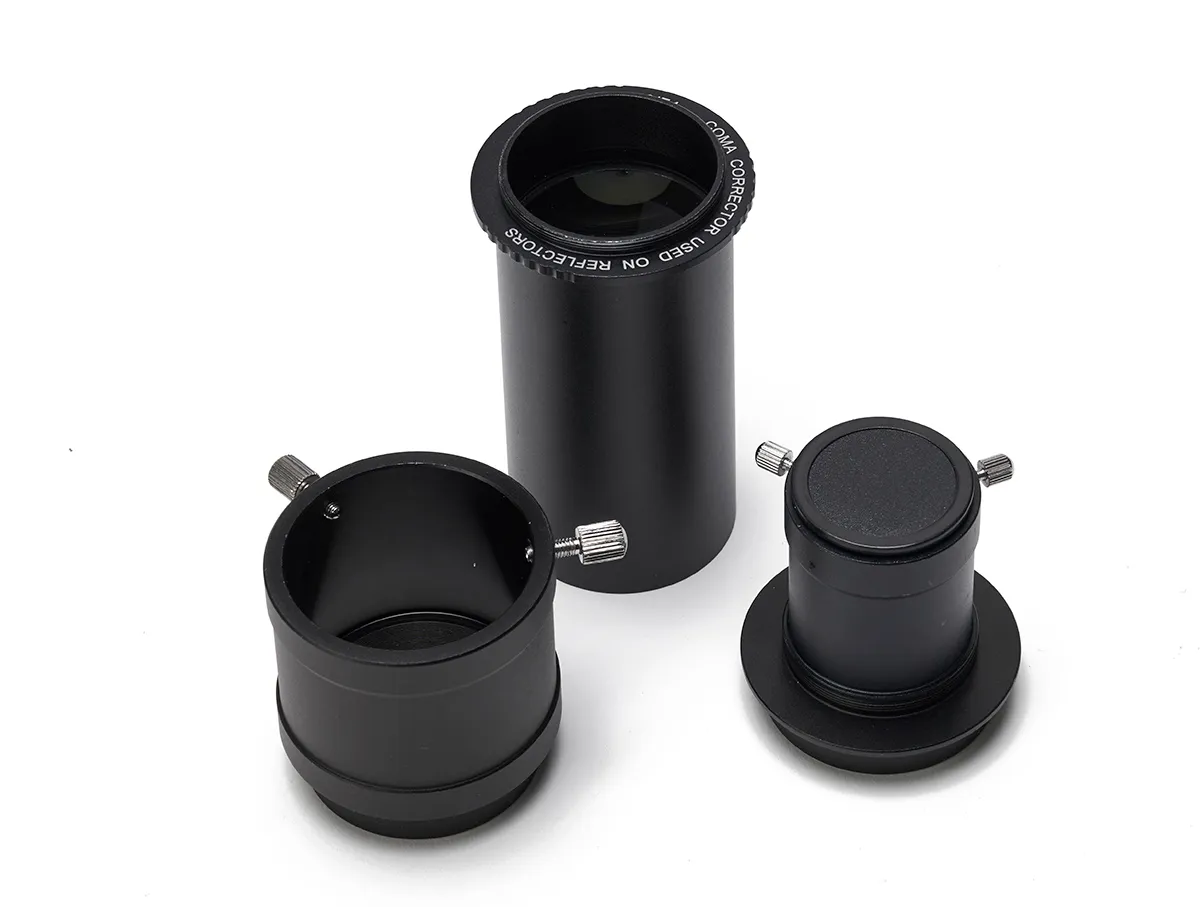
5 best features
6mm x 30mm finderscope
A standard finderscope shoe is fitted to the tube near the focuser and a straight-through 6mm x 30mm finder with a wide field of view is supplied to help with star alignment. The finderscope has crosshairs for accuracy and is easily adjusted to line up with the Quattro’s optics via two thumbscrews.
M48 2-inch aplanatic super coma corrector
An essential part of the optical system for astrophotography, the corrector includes an ED element in its four lenses and produces a flat image circle of 21.7mm, enough for APS-C-sized camera sensors. Cameras are attached via an M48 thread; a back focus distance of 55mm is optimal for best results.
Vixen-style dovetail bar and tube rings
A Vixen-style 45mm dovetail bar is supplied, along with sturdy Sky-Watcher tube rings. These are easily adjusted by hand to allow for telescope balancing and positioning, and the top of the rings have threaded holes to fit additional accessories such as a guidescope.
2-inch dual-speed (1:10) Crayford-stylefocuser
Quattro telescopes have Linear Power Crayford-style focusers that use ball bearings to support the drawtube. We found the focuser precise and accurate in use and very smooth, particularly when fine-focusing. It easily supported our chunky eyepieces and camera equipment. Locking the focuser in place didn’t shift the image or focus point.
Light, compact design
At only 5.7kg and less than 60cm (2ft) in length, the Quattro is easily manageable and suitable for a wide range of mounts. Unlike the larger models, there are no baffles in the 150P, which keeps the weight down. With a DSLR camera fitted, the balance point
is near-central.
Vital stats
- Price: £499
- Optics: Newtonian reflector, 0.86x aplanatic coma corrector
- Aperture: 150mm
- Focal length: 600mm, f/4; 515mm with coma corrector
- Focuser: 2-inch Linear Power Crayford-style focuser
- Extras: Dovetail bar, tube rings, 6mm x 30mm finder scope
- Weight: 5.7kg
- Supplier: Optical Vision Ltd
- Email: info@opticalvision.co.uk
- www.opticalvision.co.uk
This review originally appeared in the February 2023 issue of BBC Sky at Night Magazine.
